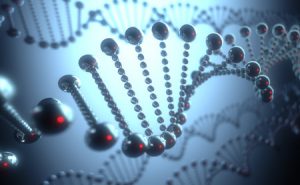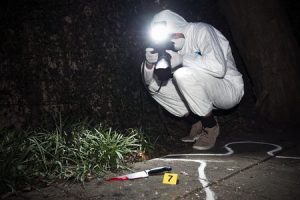The discovery of what DNA holds is celebrated every year on National DNA Day.
Due to be celebrated on 25th April 2017, it gave us the perfect excuse to look at how DNA has played a vital role in solving some of the worst crimes in Britain and how, decades after the crime has been committed, DNA technology is bringing perpetrators to justice.
Who Discovered DNA?
Deoxyribonucleic acid – or DNA as we know it – has been studied throughout the 20th Century but it was Rosalind Franklin and Maurice Wilkins who studied DNA using x-rays.
Franklin produced an x-ray that allowed two other scientists to work out the 3D structure of DNA, found to be a double helix.
In 1962, Crick, Watson and Wilkins received a Nobel Prize in Physiology or Medicine for their discovery. Rosalind Franklin had died four years previously with her role in the discovery not acknowledged until many years later.
DNA is used in many fields of study, one of which is in crime investigations. It is used in two ways: either to identify criminals with incredible accuracy where biological evidence exists at a crime scene such as hair, blood, skin etc. or to exonerate a suspect. You can learn more about this on criminology courses online, develop your skillset and knowledge.
DNA has played a vital role in many criminal cases, many of which are covered in the background of forensic science courses.
CASE 1: The Murder of Melanie Road
Advances in forensic science along with dogged detective work brought to justice the killer of Melanie Road.

DNA has played a vital role in solving some of the worst crimes in Britain
DNA analysis was not available at the time but police collected over 71 samples of blood, as well as several samples of semen.
Despite extensive enquiries, no killer was brought to justice. Until 2015.
The previous year, in 2014, a young woman was arrested because of a domestic violence altercation. As part of the arrest and charging process, a DNA sample was taken from her.
Melanie’s DNA was re-run in the system the following year and showed that some of the samples taken from the murder scene was a familial match with the woman previously arrested for the domestic violence incident. This led the police to Christopher Hampton, the father of the woman arrested and cautioned as part of the domestic violence charge.
Christopher Hampton voluntarily gave police a swab. His DNA profile matched the DNA of some of the blood posts and the semen found on or around Melanie’s body.
A few days before Christmas 2015, despite his not guilty plea and continual denials, Christopher Hampton was jailed for the murder of Melanie Road.
CASE 2: The Murder of Mary Klinsky
It is not just in Britain where DNA has played a crucial role in identifying and bringing to justice murderers and other criminals.
Mary Klinsky was described as a sweet 18-year-old but she was raped and killed with a blow to the head. Her body was discovered face down under a highway in the state of New Jersey.
There was significant evidence left at the crime scene, but in 1965, the ability to read and access this DNA information was simply not available.
In 2016, there was a breakthrough – DNA from the crime scene was matched to suspected serial killer, Robert Zarinsky.
But he was never charged. He had died in 2008 in prison, serving a sentence for the murder of a woman in 1969. Police also had evidence that he had murdered the previous year in 1968 and the information from the DNA samples strongly suggests that he was involved in, or carried out the murder of Mary Klinsky, too. How many more murders could he have been responsible for?
CASE 3: The Conviction of Colin Pitchfork
As part of Forensic Science courses, there is always more than a hint of caution, looking at cross-contamination in which results can be skewed, leading to false readings.
The rape and murder of Lynda Mann, and then another young woman in the same spot lead to Richard Buckland confessing to the crime.
A little-known DNA tool was used at the time – genetic fingerprinting – but no match was returned. The test was repeated twice but no trace of Buckland was found at the scene. He subsequently said that he has been pressured into the confession.

DNA is used in many fields of study, one of which is in crime investigations.
He sent a friend in his place to give fingerprints but couldn’t resist bragging about it. He was reported to the police.
Colin Pitchfork was the first murderer convicted using DNA evidence after his fingerprints proved a match to those found at the scene of both murders.
Advances in DNA Technology
Students of Forensic Science courses will be aware of the changes and advances that scientists are currently working on in relation to future DNA technology. And it promises to reveal even more mysteries.
It is an exciting field of study – why wouldn’t you want to be part of it?
